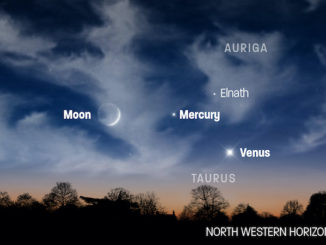
moon

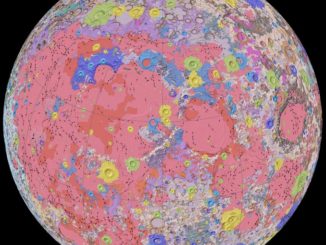

Star Epsilon (ε) Tauri plays hide and seek with the crescent Moon on 29 March
On Sunday, 29 March around civil dusk, observers throughout the British Isles with suitably steadied binoculars and small telescopes can watch naked-eye star Epsilon (ε) Tauri disappear behind the darkened hemisphere of the almost 5-day-old waxing crescent Moon, reappearing again slightly more than an hour later. Here’s our where and when guide to viewing it.
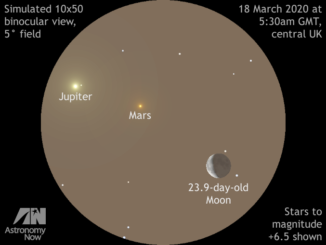
See the old Moon join a dawn planetary parade, 18–19 March
If you’re an early riser in the British Isles, let the waning crescent Moon be your guide to three naked-eye planets – Mars, Jupiter and Saturn – at dawn on 18 and 19 March 2020. This celestial conjunction occurs in the constellation of Sagittarius where you can see all four Solar System bodies within the span of a fist at arm’s length. Look for attractive binocular conjunctions too.
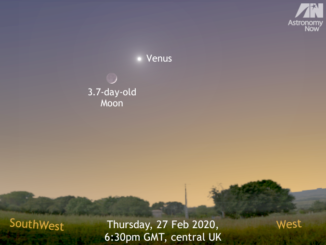
See the crescent Moon meet Venus at dusk, 26–28 February
For three evenings from 26–28 February 2020, observers in Western Europe including the British Isles can watch the waxing crescent Moon’s changing configuration with brightest planet Venus in the west-southwest at dusk. The pair are closest for UK-based observers on the evening of Thursday, 27 February, simultaneously visible in low-power binoculars.
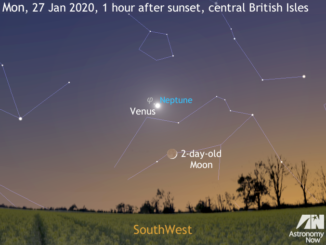
Venus dazzles at dusk and closes in on Neptune
Even casual skywatchers cannot fail to notice brightest planet Venus currently hanging like a lantern above the southwest horizon at dusk. But as Venus moves eastwards through Aquarius on successive nights, it draws closer to outermost (and faintest) planet Neptune until the pair reach a particularly close conjunction on the UK evening of Monday, 27 January.

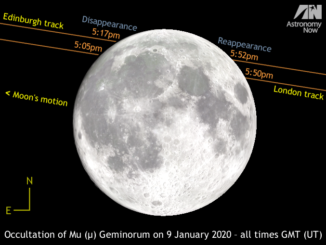
Watch the Moon hide naked-eye star Tejat in Gemini on 9 January
Magnitude +2.9 star Mu (μ) Geminorum, better nown as Tejat in the constellation of Gemini, is occulted (hidden) by the rising 13-day-old waxing gibbous Moon early on the evening of Thursday, 9 January 2020 as seen from the entire British Isles. This is a spectacle for small telescopes and large binoculars, the first bright lunar occultation of a busy year for such events.
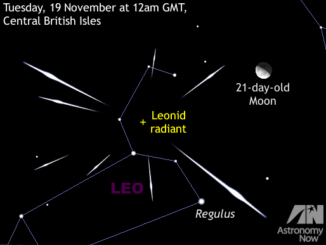
Moonlight challenges Leonid meteor shower maximum on 18 November
The maximum of the annual Leonid meteor shower is predicted for 11pm GMT (23h UT) on Monday, 18 November 2019. However, the famously swift, bright Leonids — some leaving persistent trails — will have to contend with the glare of a 21-day-old waning gibbous Moon close by visible from 9:30pm GMT to dawn on the 19th.

Watch the Moon hide naked-eye star Zeta (ζ) Tauri on 19 October
When a nearby astronomical body passes between the observer and a more distant object, see say that an occultation is taking place. Since the Moon is our nearest celestial neighbour, it regularly passes in front of planets and stars. Observers in the British Isles can see naked-eye star Zeta (ζ) Tauri glide behind the Moon on Saturday, 19 October 2019.
